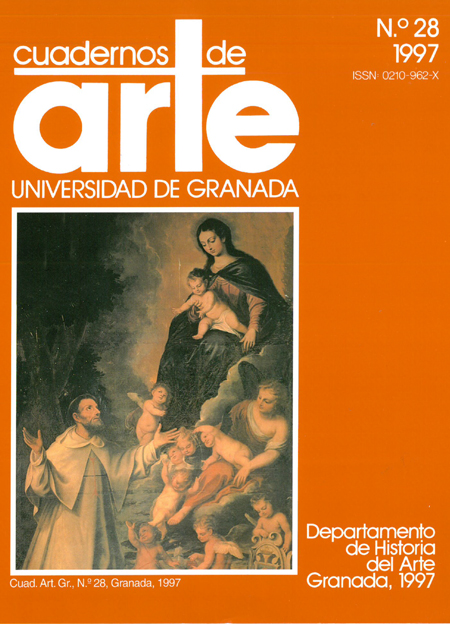Moorish remains in the poor quarter (St. Francis) in Velez-Malaga. The Minaret of the Monastery of St. Francis and the arched doorway of no. 2, La Gloria street
Keywords:
Moorish remains, Minarets, Almohad Art, Nazari Art, Archways, St. Francis convent, Vélez-MálagaAbstract
At the time of Moorish predominance, the town of Ballis (now Vélez-Málaga) was the prosperous centre of a region called al-Sarq (Eastern Axarchy), in the Rayya Cora. There was an important castle, an extensivemedina and two poorer quarters to the south. In one of these, St. Francis, Moorish remains of the minaret of a mosque have been discovered. The convent of St. Francis was later built on this site. A decorated archway with ataurique and the script indicating an importan! building of the quarter. The minare! belongs to the Almohad or first Nazari era (from the 12th to the beginning of the 14th centuries) and the archway to the last stage (end of the 14th to 15th centuries).
Downloads
Downloads
Published
1997-11-01
How to Cite
Vílchez Vílchez, C. (1997). Moorish remains in the poor quarter (St. Francis) in Velez-Malaga. The Minaret of the Monastery of St. Francis and the arched doorway of no. 2, La Gloria street. Cuadernos De Arte De La Universidad De Granada, 28, 19–31. Retrieved from https://revistaseug.ugr.es/index.php/caug/article/view/10768
Issue
Section
Estudios
License
Los autores que publican en esta revista están de acuerdo con los siguientes términos:- Los autores conservan los derechos de autor y garantizan a la revista el derecho de ser la primera publicación del trabajo al igual que ser licenciado bajo una licencia Creative Commons que permite a otros compartir el trabajo con un reconocimiento de la autoría del trabajo y la cita de la fuente original, con un uso no comercial y siempre que no se hagan obras derivadas.
- Los autores pueden establecer por separado acuerdos adicionales para la distribución no exclusiva de la versión de la obra publicada en la revista (por ejemplo, situarlo en un repositorio institucional o publicarlo en un libro), con un reconocimiento de su publicación inicial en esta revista.
- Se permite y se anima a los autores a difundir sus trabajos electrónicamente (por ejemplo, en repositorios institucionales o en su propio sitio web) antes y durante el proceso de envío, ya que puede dar lugar a intercambios productivos, así como a una citación más temprana y mayor de los trabajos publicados (Véase The Effect of Open Access) (en inglés).


 ISSN-e: 2445-4567
ISSN-e: 2445-4567








